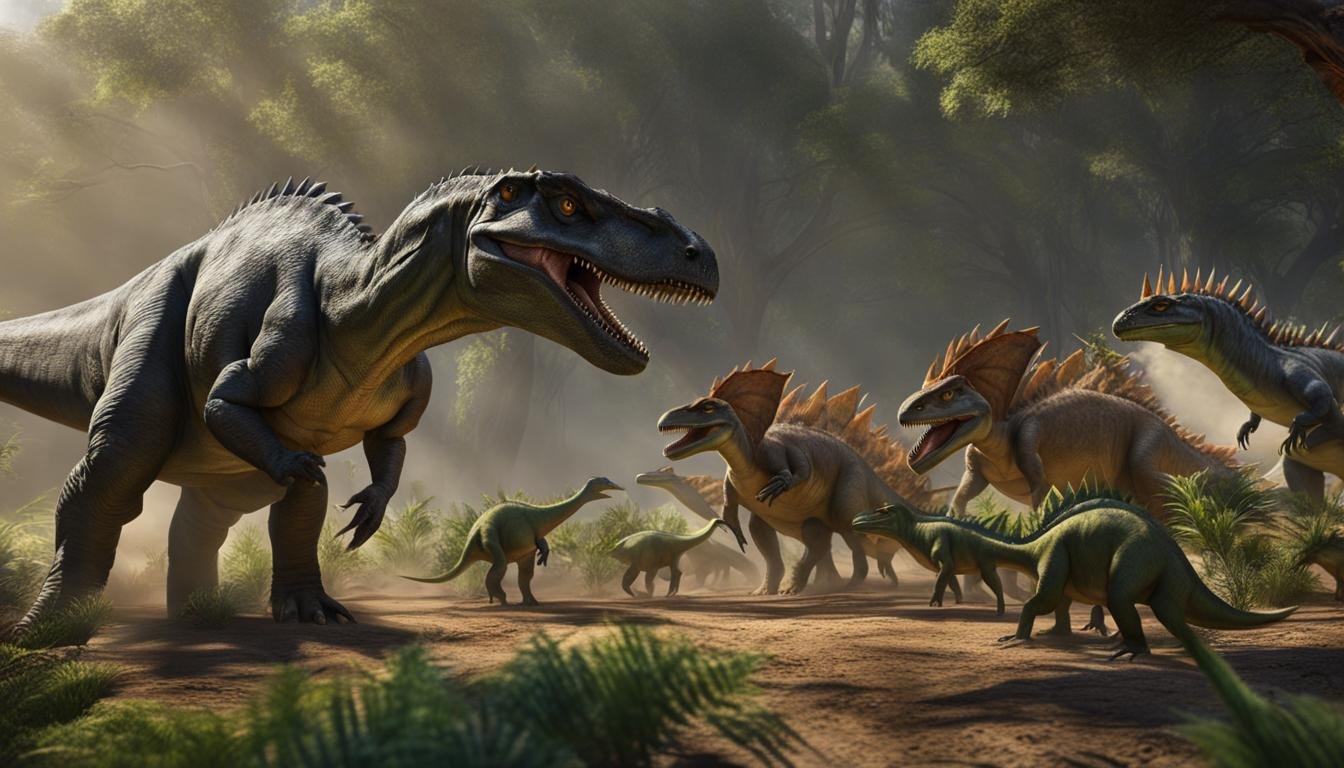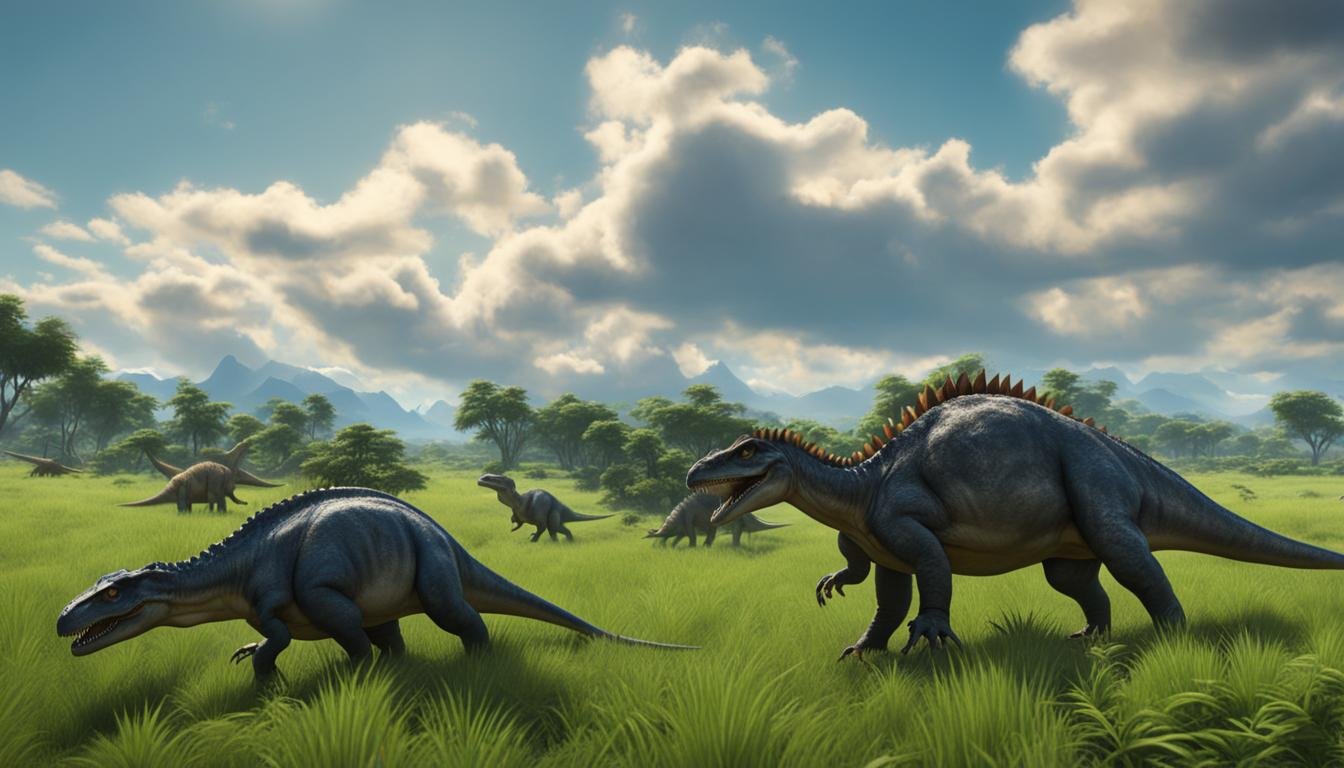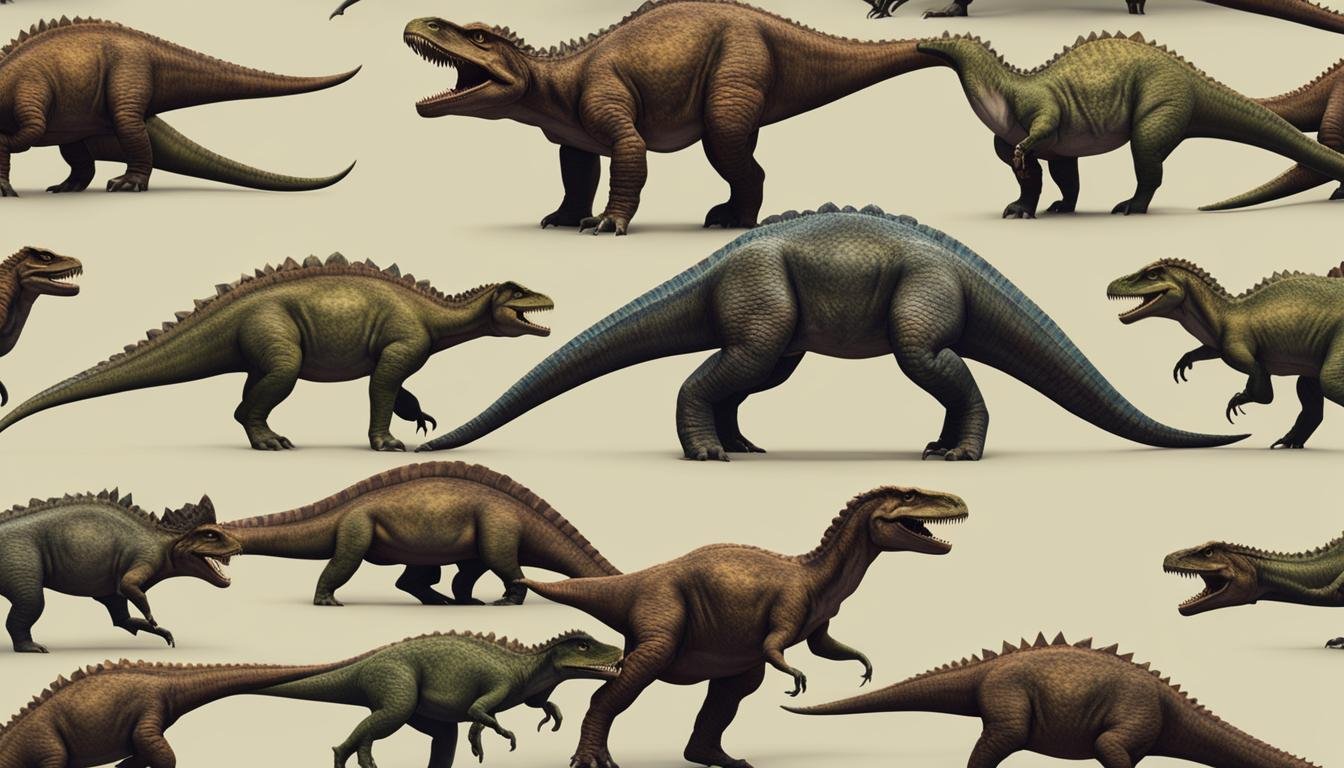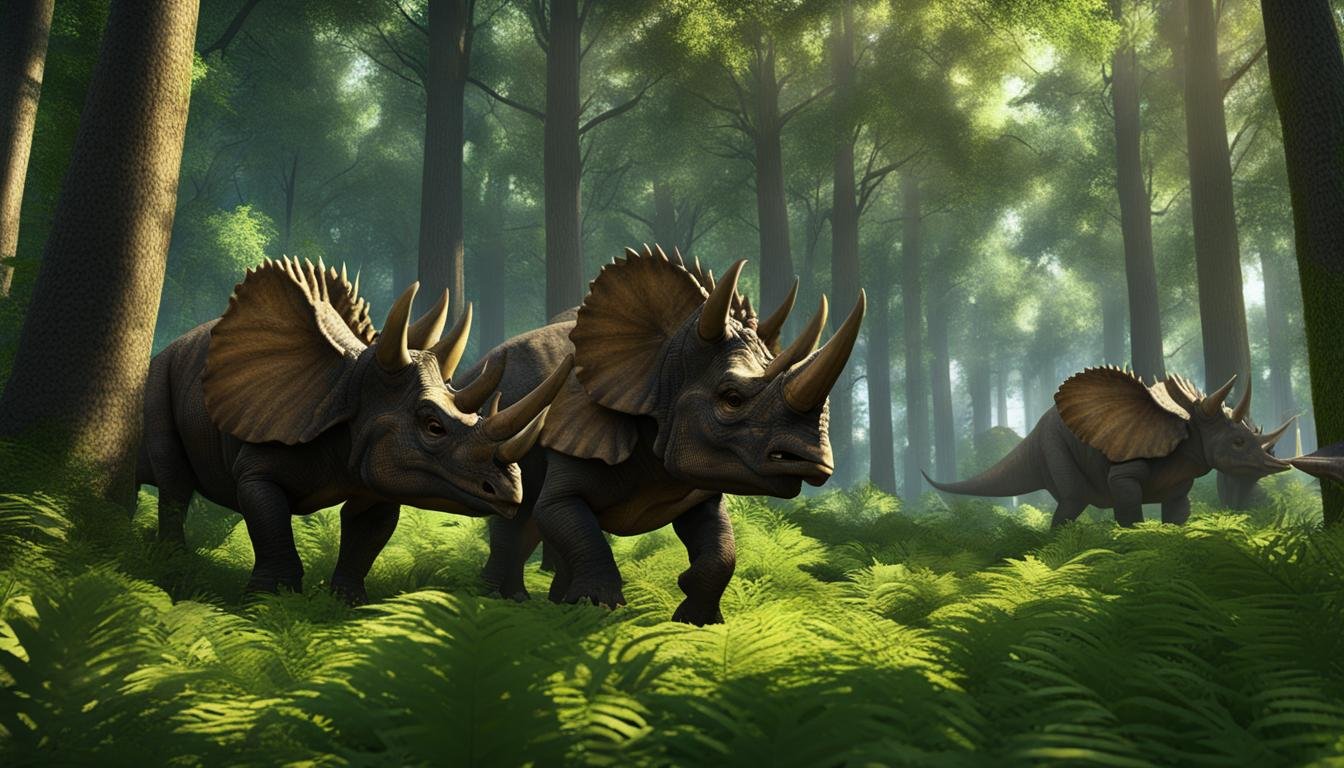Dinosaur Behavioral Ecology is the study of how ancient creatures, known as dinosaurs, behaved and adapted to their environments. By examining fossil evidence, scientists can gain valuable insights into the behaviors and survival strategies of these long-extinct creatures. From analyzing bones and teeth to studying nesting behavior and trackways, researchers piece together the puzzle of dinosaur behavior, providing a window into the prehistoric world.
| Main Point | Description |
|---|---|
| Study of Dinosaur Behavior and Adaptation | Dinosaur Behavioral Ecology focuses on understanding how dinosaurs behaved and adapted to their environments. |
| Insights from Fossil Evidence | Fossils, including bones and teeth, provide crucial insights into the behaviors and adaptations of dinosaurs. |
| Social Behavior and Movement Patterns | Nesting behavior and trackways are analyzed to infer the social interactions and movement patterns of dinosaurs. |
| Diet and Feeding Habits | The structure of dinosaur bones and teeth offers valuable information about their dietary habits and feeding mechanisms. |
| Understanding Dinosaur Behaviors | Research in dinosaur behavioral ecology is key to comprehending the diverse range of behaviors and adaptations exhibited by these ancient creatures. |
Reconstructing Dinosaur Behavior from Fossil Remains
Paleontological studies play a crucial role in understanding the behavior of dinosaurs. By examining fossil evidence, scientists can make inferences about the evolutionary adaptations and ecological roles of these ancient creatures. Fossils, such as bones and teeth, provide valuable insights into dinosaur behavior and their interactions with their prehistoric environments.
One of the key approaches to reconstructing dinosaur behavior is by analyzing anatomical adaptations. For example, the shape of teeth can reveal the feeding habits of dinosaurs. Sharp, serrated teeth are often associated with carnivorous dinosaurs, while flat, broad teeth suggest herbivorous diets. By comparing these adaptations to those of modern animals, scientists can gain insights into the behavior of non-avian dinosaurs.
“The study of dinosaur behavioral ecology provides fascinating insights into the ancient world and the diverse behaviors of these long-extinct creatures.”
Paleobiology, the study of ancient life, also plays a significant role in understanding dinosaur behavior. By studying bone and tooth structure, scientists can infer information about the ecological roles of different dinosaur species. Additionally, paleopathological analysis of dinosaur bones can reveal patterns of injury that shed light on aggressive behaviors, such as combat or predation.
| Dinosaur Behavior | Anatomical Adaptations |
|---|---|
| Carnivorous | Sharp, serrated teeth |
| Herbivorous | Flat, broad teeth |
This table highlights the relationship between dinosaur behavior and anatomical adaptations. The data clearly shows how tooth structure can be indicative of different feeding habits. Furthermore, it emphasizes the importance of paleontological studies in understanding the behavior of these fascinating creatures.
To summarize, paleontological studies and the analysis of fossil evidence provide valuable insights into the behavior of dinosaurs. By examining anatomical adaptations, paleobiologists can make inferences about the feeding habits and ecological roles of different dinosaur species. The study of dinosaur behavioral ecology continues to expand our understanding of the ancient world and the diverse behaviors of these long-extinct creatures.
Dinosaur habitats and prehistoric behavior
Understanding the habitats and behavior of dinosaurs is a complex task that relies on the analysis of various types of fossil evidence. By examining fossilized dinosaur nests and eggs, scientists have gained insights into the nesting behavior and parental care exhibited by these ancient creatures. The discovery of well-preserved nests and embryos suggests that some dinosaurs practiced extended parental care, similar to modern birds and crocodiles. These findings provide valuable information about the social behavior and reproduction strategies of dinosaurs.
In addition to nesting behavior, the study of dinosaur stomach contents and coprolites (fossilized feces) has shed light on their diets and feeding behaviors. By analyzing the remains of plants and animals found within these fossils, scientists can determine the types of food consumed by different dinosaur species. This information helps reconstruct the ancient ecosystems in which dinosaurs lived and provides insights into their ecological roles as herbivores or carnivores.
“The discovery of well-preserved nests and embryos suggests that some dinosaurs practiced extended parental care, similar to modern birds and crocodiles.”
Furthermore, the analysis of dinosaur footprints and trackways has revealed important details about dinosaur locomotion and behavior. By studying the positioning and patterns of footprints, scientists can infer the posture, walking style, and even the potential speed of different dinosaur species. The presence of trackways made by multiple dinosaurs traveling together suggests gregarious behavior, indicating the possibility of herding or social interactions among some dinosaur groups.
Through the examination of bone and tooth structure, researchers can gain further insights into the behavior of dinosaurs. The shape and structure of teeth can provide clues about whether a dinosaur was a carnivore or herbivore, while bone pathology can reveal patterns of aggression or predation. These analyses, combined with comparisons to modern animal counterparts, allow scientists to make informed interpretations about the feeding habits and ecological roles of various dinosaur species.
Dinosaur Behavior Insights
The study of dinosaur habitats and prehistoric behavior not only provides fascinating insights into the ancient world but also contributes to our understanding of the adaptations and survival strategies of these long-extinct creatures. Through the investigation of nesting behavior, diet, locomotion, and bone structure, scientists continue to expand our knowledge of dinosaur behavior and their interactions with the prehistoric environments they inhabited.
Dinosaur Footprints: Clues to Prehistoric Behavior
Dinosaur footprints and trackways provide invaluable insights into the behavior and movement patterns of these remarkable creatures. By studying the characteristics and arrangement of footprints, paleontologists can glean information about the speed, size, and social behavior of dinosaurs.
Footprint Analysis
Analysis of dinosaur footprints involves examining their size, shape, and depth. Larger footprints typically indicate larger dinosaurs, while variations in shape can suggest different species. The depth of the footprint can reveal the weight of the dinosaur and provide clues about its posture and walking style. By analyzing the spacing and arrangement of footprints within a trackway, scientists can infer whether dinosaurs traveled alone or in groups.
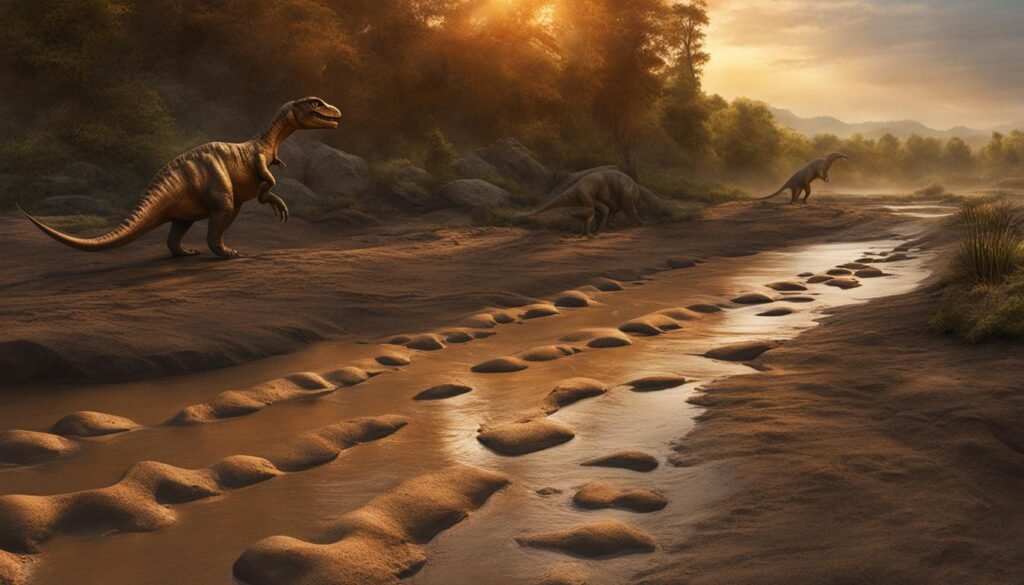
Dinosaur Speeds
One fascinating aspect of studying dinosaur footprints is the ability to estimate their speeds. By measuring the length of each stride and the distance between footprints, researchers can make educated guesses about how fast these ancient creatures could move. This information helps paint a more complete picture of dinosaur behavior, including hunting strategies, migration patterns, and even evading predators.
Prehistoric Behavior and Social Interaction
Trackways not only offer clues to individual dinosaur behavior; they can also provide insight into social interaction. The discovery of parallel trackways or footprints overlapping suggests that some dinosaurs traveled, hunted, or migrated in groups. This evidence points to gregarious behavior and provides a glimpse into the social structures of these prehistoric creatures.
By analyzing dinosaur footprints, scientists can uncover a wealth of information about the behavior and locomotion of these magnificent animals. The study of footprints, along with other paleontological evidence, allows us to piece together the complex lives of dinosaurs and better understand their ancient world.
Dinosaur Behavior: Clues from Bone and Tooth Structure
When it comes to understanding the behavior of dinosaurs, the structure of their bones and teeth provides valuable insights. By examining the morphology of dinosaur bones and teeth, scientists can make inferences about their diet and feeding habits. Teeth, in particular, are a crucial indicator of the dietary preferences of these ancient creatures.
| Dinosaur Species | Teeth Shape | Diet |
|---|---|---|
| Tyrannosaurus Rex | Serrated | Carnivorous |
| Triceratops | Flat and Leaf-like | Herbivorous |
| Stegosaurus | Small, Peg-like | Herbivorous |
In the above table, we can see the contrasting tooth shapes and associated diets of different dinosaur species. The serrated teeth of the Tyrannosaurus Rex indicate a carnivorous diet, while the flat and leaf-like teeth of the Triceratops and small, peg-like teeth of the Stegosaurus suggest herbivorous preferences.
“The study of tooth morphology in dinosaurs allows us to unravel their dietary habits and ecological roles in prehistoric ecosystems,” says Dr. Sarah Thompson, a paleontologist specializing in dinosaur paleopathology.
Beyond diet, paleopathological analysis of dinosaur bones has revealed intriguing patterns of injury that provide further insights into dinosaur behavior. These injuries can indicate aggressive behaviors, such as combat or predation. By examining the frequency and locations of these injuries, scientists can establish social hierarchies and dominant behaviors within dinosaur populations.
Through the study of bone and tooth structure, scientists continue to uncover the mysteries of dinosaur behavior. While there is much to learn and decipher, these insights provide a window into the lives and adaptations of these magnificent creatures that roamed the Earth millions of years ago.

Conclusion
Studying dinosaur behavioral ecology offers a fascinating glimpse into ancient life and the diverse behaviors of these long-extinct creatures. However, it is important to acknowledge that much of our understanding of dinosaur behavior is based on speculation. Paleontologists rely on a combination of fossil evidence, biomechanics, and comparisons with modern animals to make informed interpretations.
While the study of dinosaur behavior has provided valuable insights, it is also a field filled with controversy and speculation. Due to the incomplete nature of the fossil record, many aspects of dinosaur behavior remain unknown. Scientists must carefully analyze the available evidence and consider alternative hypotheses to paint a more accurate picture of how these ancient creatures lived.
Despite the challenges and controversies, ongoing research continues to expand our knowledge of dinosaur behavioral ecology. By piecing together clues from fossils, scientists can gain insights into the adaptations and survival strategies of dinosaurs in prehistoric environments. This research not only deepens our understanding of the past but also helps us appreciate the incredible diversity of life that existed millions of years ago.






